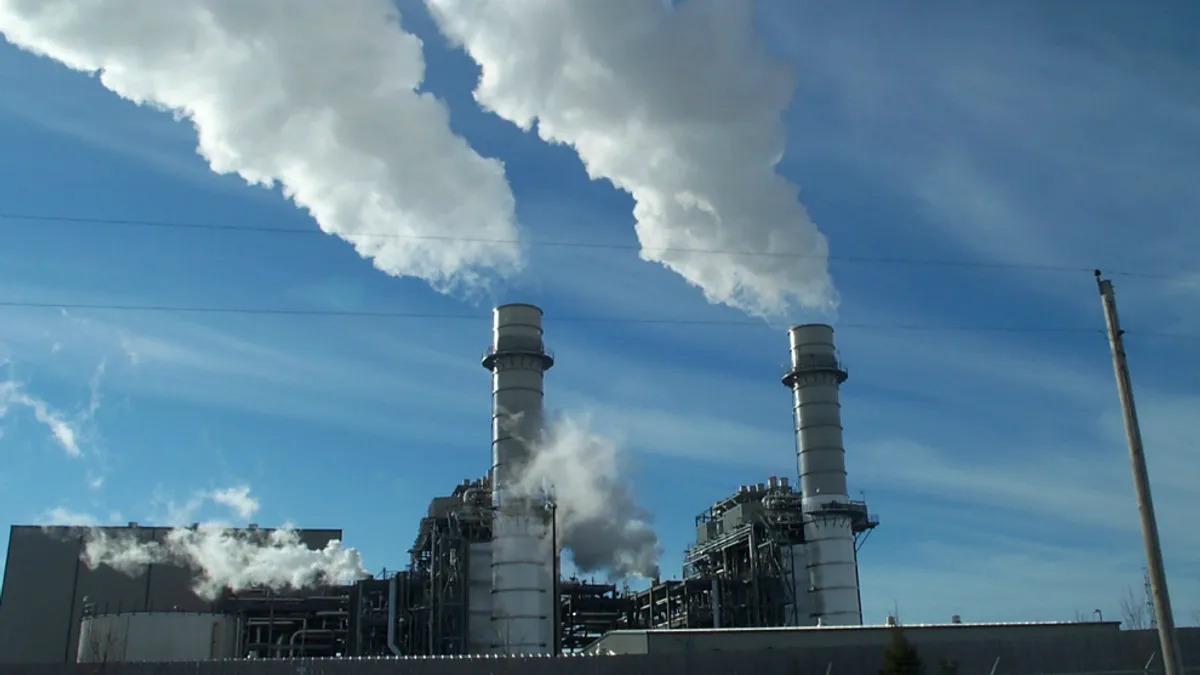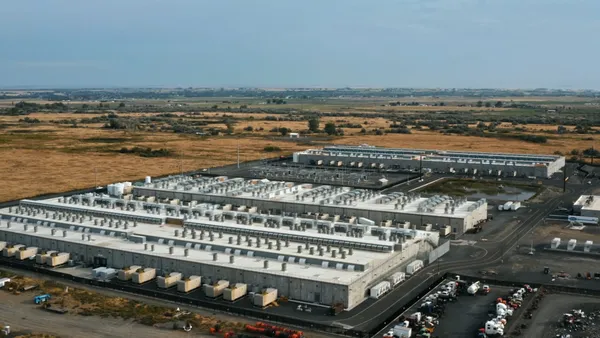Dive Brief:
- Southern California Edison (SCE) will spend $12 billion over the next three years to modernize its distribution system and acquire new generation resources, but some critics say the utility is stuck in the past rather than embracing cleaner technologies needed to meet state environmental goals.
- California last month finalized a 50% renewables standard by 2030, along with mandating efficiency gains, and the state has put energy storage goals in place for the largest utilities.
- But SCE's plan for replacing generation from the San Onofre Nuclear Generating Station (SONGS) calls for three new gas-fired plants to be constructed, and the LA Times reports that critics believe the company could have looked more to local renewables and battery storage.
Dive Insight:
California regulators could vote this month on SCE's plan to construct three new gas-fired power plants, providing generation the utility says it needs to replace the 2,200 MW lost when failed steam generators forced SONGS to shutter. But environmentalists say the utility's strategy is a step in the wrong direction, when it should be looking to locally-sourced renewables and storage to meet demand.
“The SCE procurement strategy is a disaster from a cost and environmental standpoint,” Bill Powers, of Powers Engineering, told the LA Times. “There is overwhelming investment in conventional natural gas-fired generation and transmission with only a sprinkling of local clean-energy resources — even though, by state law, clean energy resources must be first in line to meet any new need."
The state recently adopted a 50% renewable standard and has mandated investor-owned utilities to begin investing in energy storage, as well as takes steps to significantly improve efficiency. So why natural gas?
SCE spokesman Robert Laffoon-Villegas told the Times that the new gas plants are needed to integrate more green power and will be vital under the state's expanded environmental goals.
"Renewable resources can fluctuate with the weather and do not always supply electricity when customers need it,” Laffoon-Villegas told the newspaper. “Natural gas plants are needed to help integrate renewable resources a nd maintain local reliability. They are even more important with 50% renewables than they are for the 33% goal.”
And though the utility is backing the gas plants, it has not exactly been slacking on energy storage. Last winter, the utility announced it would acquire more than 250 MW of storage along with other technologies like utility-scale batteries, behind-the-meter resources, and non-battery storage alternatives.
While a decision is possible at the California Public Utilities Commission's next meeting, the Orange County Register reports that a delay is possible as the plan does not have to be finalized until spring. The plants would help SoCal Edison acquire more than 2,200 MW supply power to almost 1 million homes.













